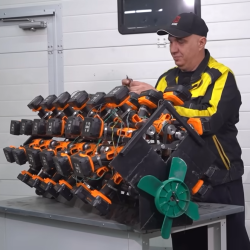The many YouTube workshop channels make for compelling viewing. even if their hackiness from a Hackaday viewpoint is sometimes variable. But from time to time up pops something that merits a second look. A case in point is [BUM]’s go-kart made entirely from Harbor Freight parts, a complete but rudimentary vehicle for around 300 dollars. It caught our eye because it shows some potential should anyone wish to try their luck with the same idea as a Power Racer or a Hacky Racer.
The chassis, and much of the running gear comes courtesy of a single purchase, a four-wheeled cart. Some cutting and welding produces a surprisingly useful steering mechanism, and the rear axle comes from a post hole digger. Power comes from the Predator gasoline engine, which seems to be a favourite among these channels.
The result is a basic but serviceable go-kart, though one whose braking system can be described as rudimentary at best. The front wheels are a little weak and require some reinforcement, but we can see in this the basis of greater things. Replacing that engine with a converted alternator or perhaps an electric rickshaw motor from AliExpress and providing it with more trustworthy braking would result in possibly the simplest Hacky Racer, or just a stylish means of gliding round a summer hacker camp.
Continue reading “All You Need To Make A Go-Kart, From Harbor Freight”


















